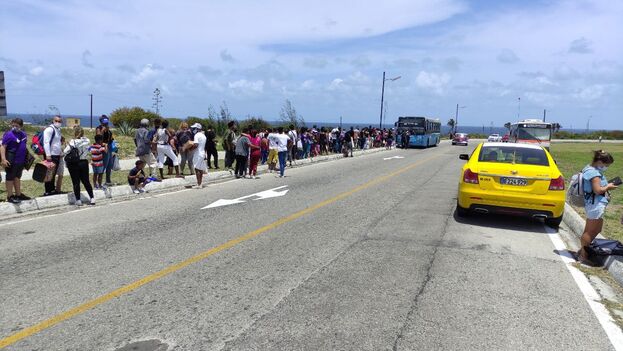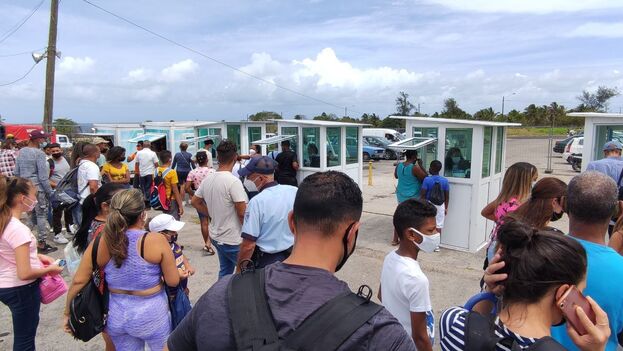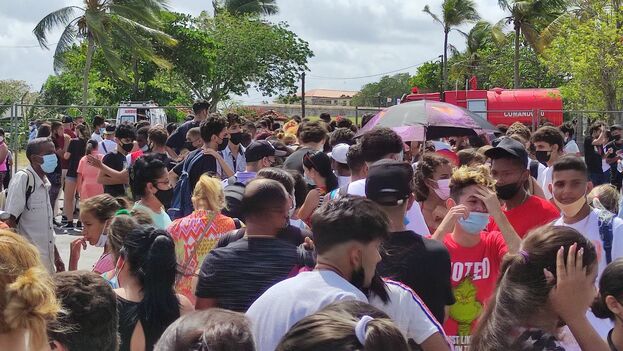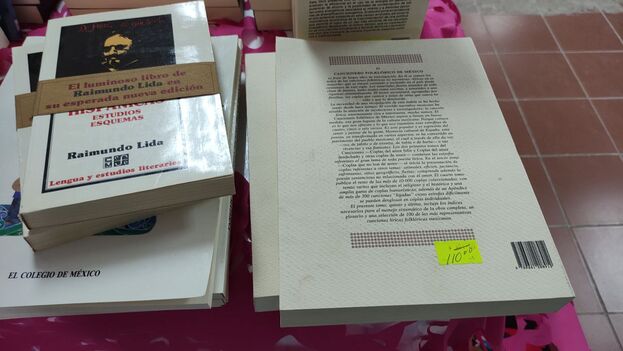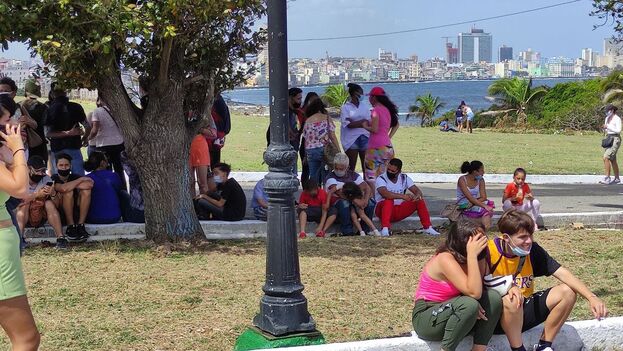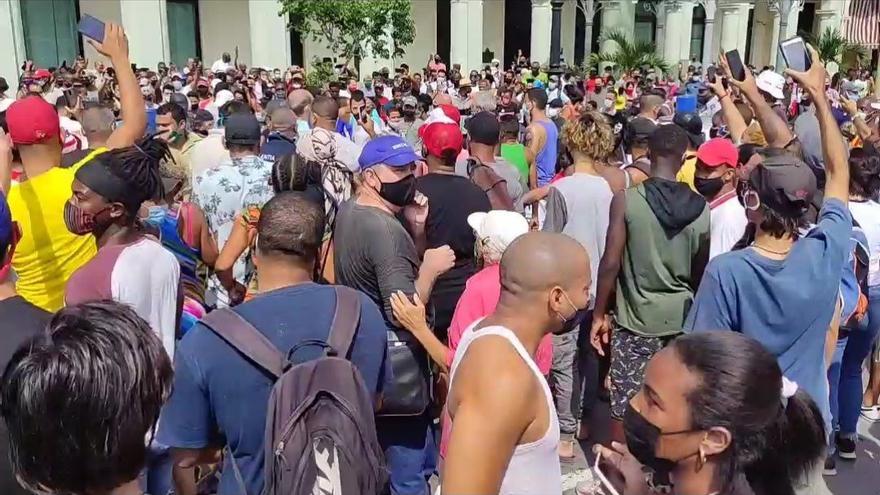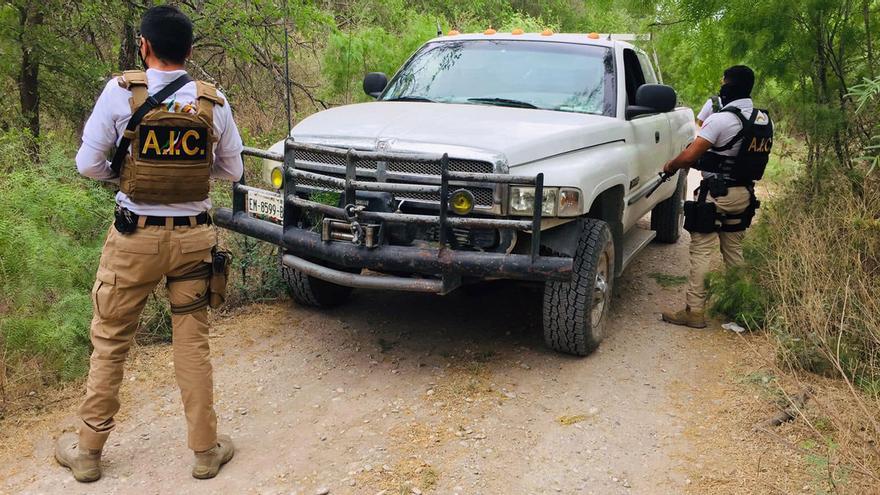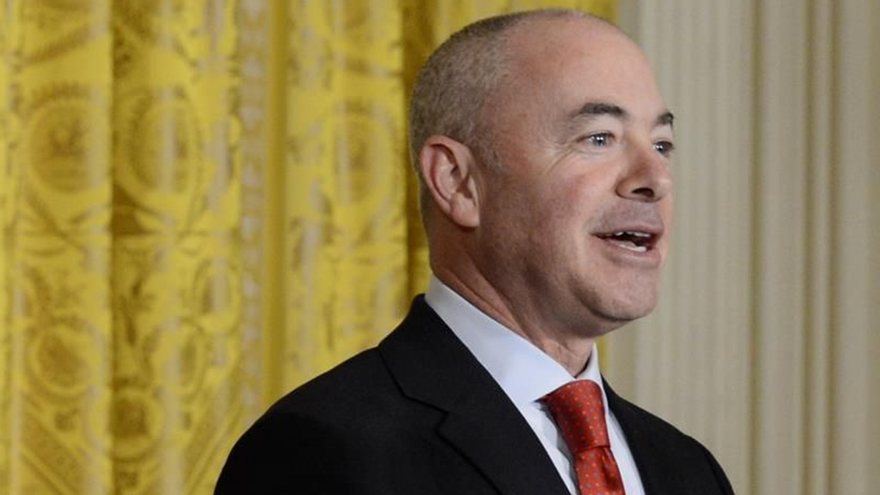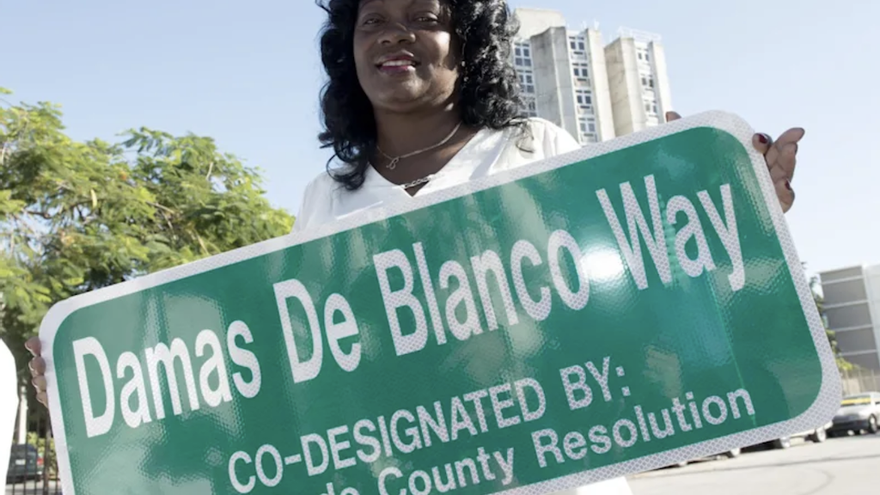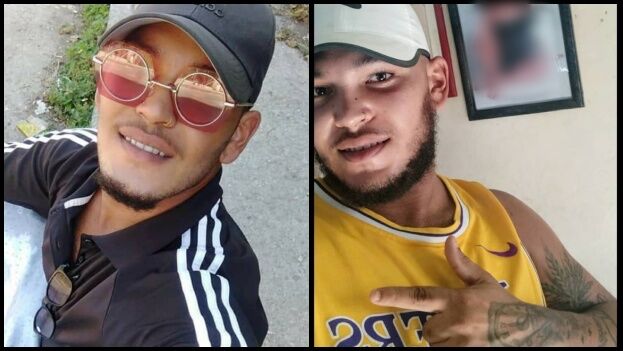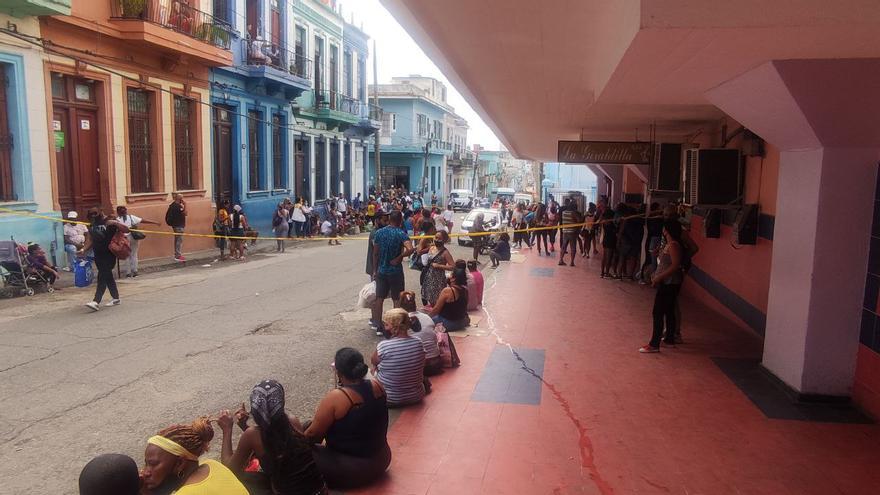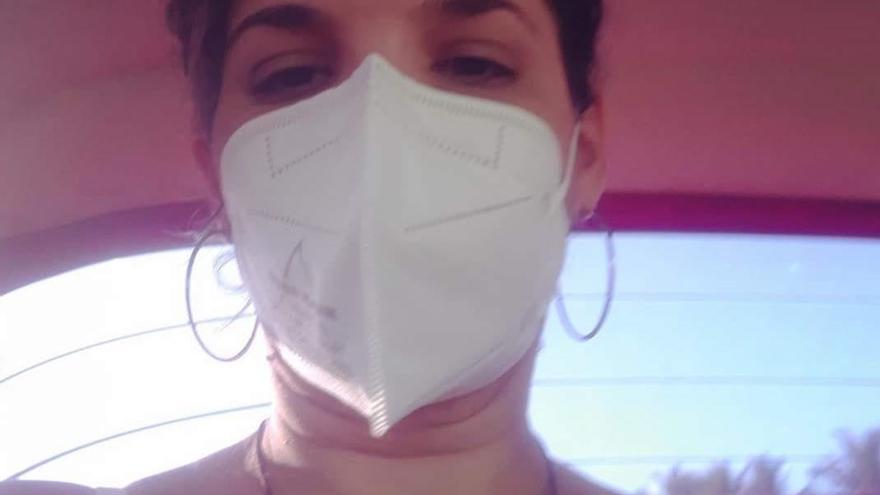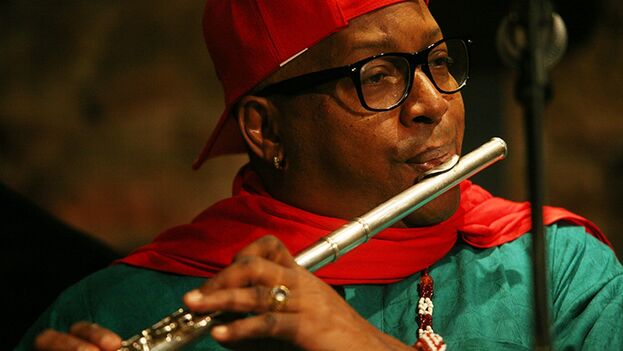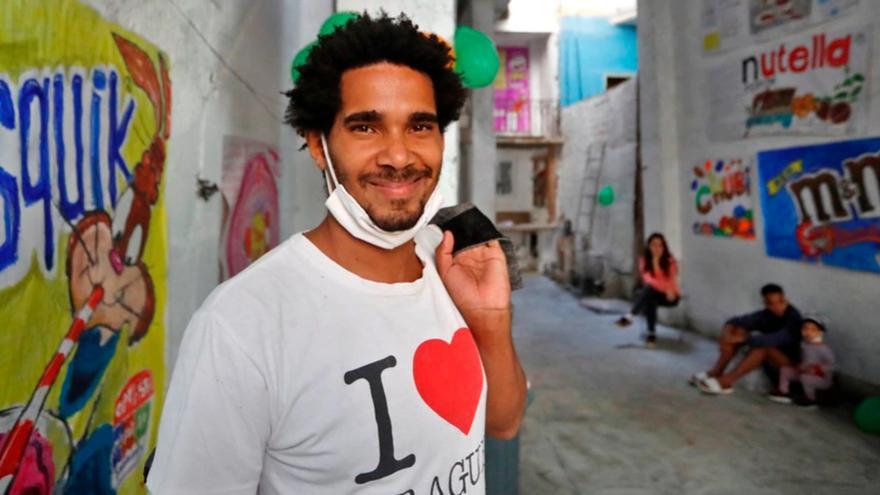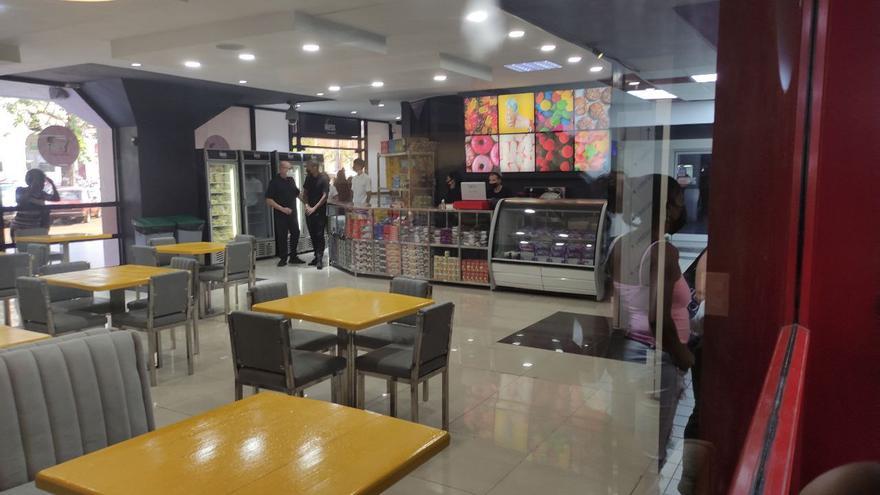
![]() 14ymedio, Juan Diego Rodríguez, Havana, 22 April 2022 — A new store that takes payment in Cuban pesos opened its doors this Friday in Carlos III Plaza, in Centro Habana. The private business, named Fress – which until now provided its services through various online shopping sites with home deliveries and payments from abroad – not only offers a variety of food products, but also has cafeteria service. In addition, it has two peculiarities: very high prices and a foreign manager.
14ymedio, Juan Diego Rodríguez, Havana, 22 April 2022 — A new store that takes payment in Cuban pesos opened its doors this Friday in Carlos III Plaza, in Centro Habana. The private business, named Fress – which until now provided its services through various online shopping sites with home deliveries and payments from abroad – not only offers a variety of food products, but also has cafeteria service. In addition, it has two peculiarities: very high prices and a foreign manager.
Sources from the shopping center confirmed to this newspaper that the state premises were rented to a Spaniard, something unusual in Cuba for an establishment of this type. The manager himself cordially welcomed his first customers this Friday.
Already in the early hours of the morning, a score of people gathered at the doors of Fress. The colorful decoration, the neatness of the tables and the large shelves called the attention of those who passed by.
However, two women waiting to enter commented loudly that the prices were not that attractive. “For example, a can of condensed milk, which is in state stores for 35 pesos, is sold for 250,” said one of them.
As the hours passed, the line began to grow, and the employees of the place had to establish an order of entry.
“Is this on the ration book?” An older man asked him, approaching the line, to which they replied: “No, sir, if it were the normal price, there would be a crowd of people here.” continue reading
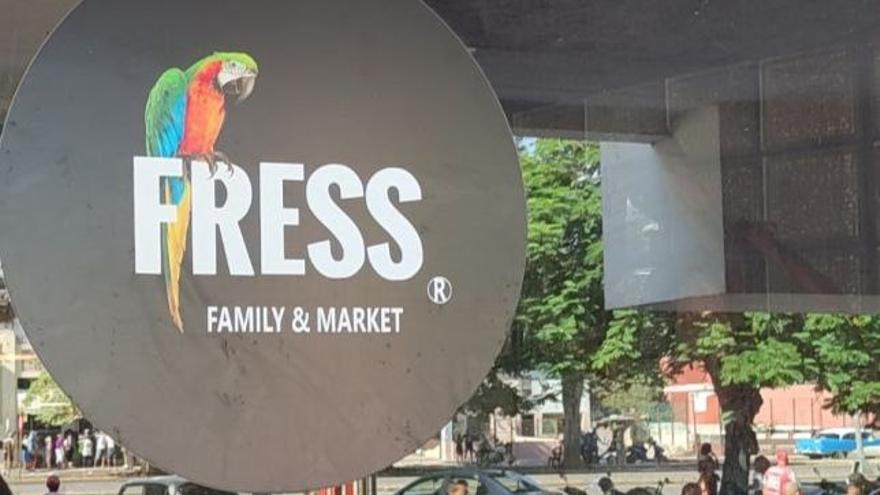
Inside, the disappointment was directly proportional to the expectation raised by the opening of Fress, especially considering that almost all the premises in Plaza de Carlos III — since it reopened after months of being closed due to the covid pandemic — accept payment only in freely convertible currency, with the exception of the food market with very long lines.
“The pizza is cold and the drinks are hot, you tell me,” a girl complained, getting up from the table. “And the potatoes and croquettes are hard,” pointed out another young man sitting at a table in the cafeteria area.
Faced with the complaints of a couple of elderly women, who regretted that there was no differential treatment with the vulnerable, the head of the café told them that eating there was “a luxury and not a necessity.”
Many of the curious did not go beyond looking in the windows, from where they could see a box of Pringles potatoes at 350 pesos, Toblerone at 380, a box of 24 cans of soft drinks at 2,640 or a little more than three kilograms of Gouda cheese at 4,000 pesos.

“It’s the same prices as resale on the street,” a Havana woman protested before walking past.
The resellers, along with the coleros — people who stand in line for others, for pay — are the key targets of the authorities since the Government authorized the sale of goods for payment in foreign currency, first of food and cleaning products and later, of other essential items, such as clothing or footwear.
Without going any further, in a speech made public only a few days ago but delivered on April 9, President Miguel Díaz-Canel denounced “some phenomena that cause there to be a certain way of distribution through channels that deviate from the concepts of justice that defends our socialist construction.”
On a first visit, it does not seem that social justice is among Fress’s objectives, which does not look very much like ‘socialist construction’ either. After spending more than half an hour in line, a young man who managed to get in came out empty-handed said, “Forget it, this is a reseller store authorized by the dictatorship.”
____________
COLLABORATE WITH OUR WORK: The 14ymedio team is committed to practicing serious journalism that reflects Cuba’s reality in all its depth. Thank you for joining us on this long journey. We invite you to continue supporting us by becoming a member of 14ymedio now. Together we can continue transforming journalism in Cuba.

